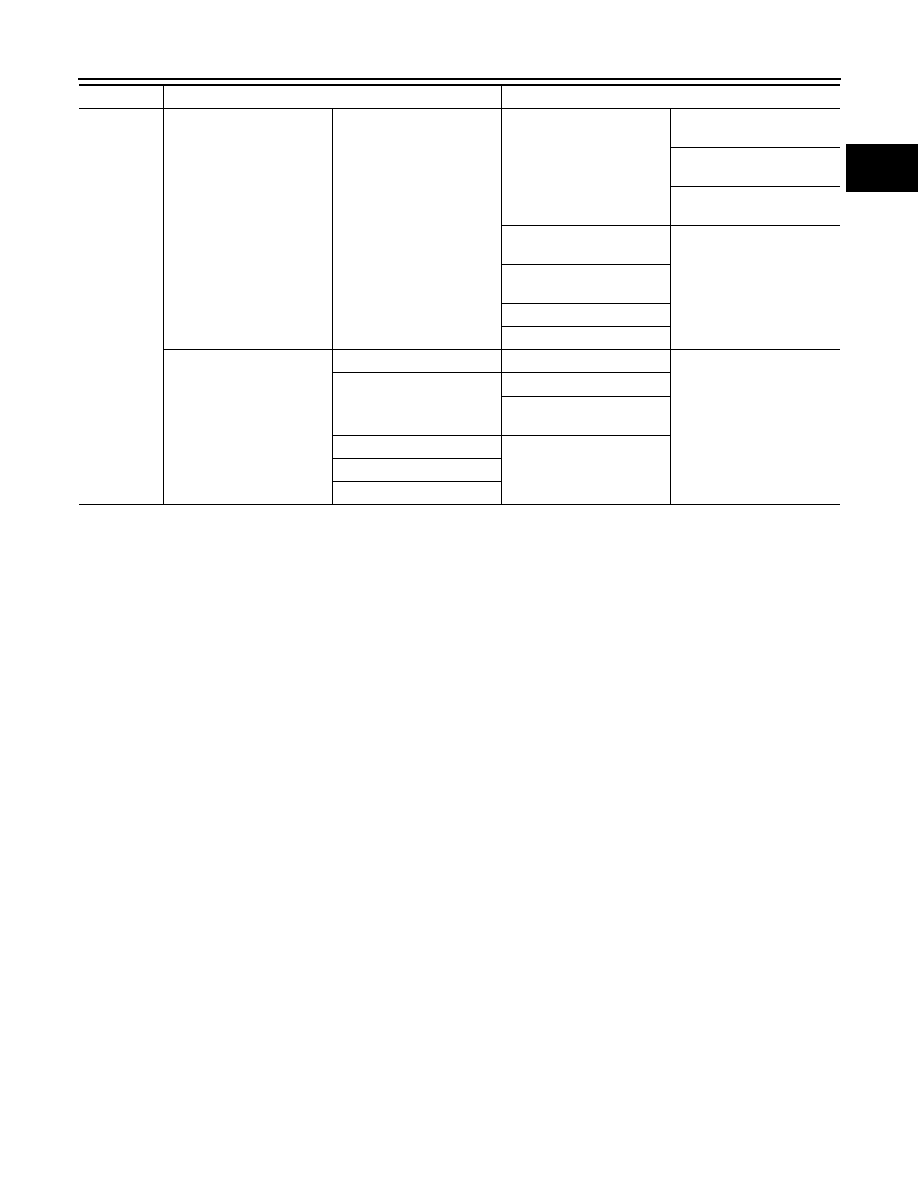Nissan Altima L32. Manual - part 199

OVERHEATING CAUSE ANALYSIS
CO-33
< FUNCTION DIAGNOSIS >
[VQ35DE]
C
D
E
F
G
H
I
J
K
L
M
A
CO
N
P
O
Except cool-
ing system
parts mal-
function
—
Overload on engine
Abusive driving
High engine rpm under no
load
Driving in low gear for ex-
tended time
Driving at extremely high
speed
Powertrain system malfunc-
tion
—
Installed improper size
wheels and tires
Dragging brakes
Improper ignition timing
Blocked or restricted air
flow
Blocked bumper
Blocked air flow
—
Blocked radiator grille
Installed car brassiere
Mud contamination or paper
clogging
Blocked radiator
Blocked air flow
Blocked condenser
Installed large fog lamp
Symptom
Check items